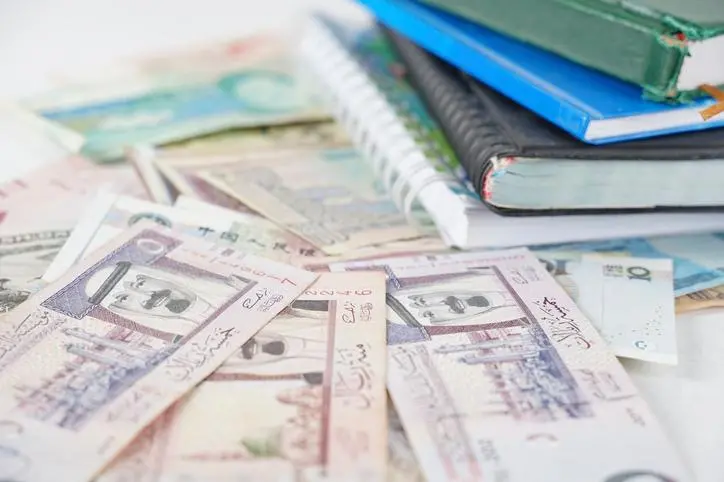PHOTO
Saudi Arabia's banks reported a better-than-expected performance for third quarter of 2019 as lending picked up on the back of mortgage financing in the retail sector. The eleven Tadawul-listed banks made a cumulative profit of 12.49 billion Saudi riyals, a rise of 13 percent compared to the profit made in the same quarter in 2018.
While most banks saw a growth in profit, three banks —Samba Financial Group, Banque Saudi Fransi and Saudi Investment Bank--reported marginal declines.
“The quarterly performance for the listed banks has been good overall with a 13 percent year-on-year growth in net income,” said Muhammad Faisal Potrik, head of research at Riyad Capital. “Overall, most of the banks posted better than expected earnings in Q3.”
Asim Bukhtiar, head of research at investment manager Saudi Fransi Capital, said banks' third quarter performance has been solid. “It is one of the star performers on the Saudi market.”
National Commercial Bank, the kingdom's largest lender, posted a quarterly net profit of 2.55 billion riyals, up 20 percent compared to the same period last year. The Jeddah-based lender, which posted a near 6 percent rise in its total operating income, said the increase was mainly due to an increase in net special commission income, investment related income and lower other operating expense. Al Rajhi Bank the biggest retail lender and the largest Islamic lender in the world, saw a 12 percent rise year-on-year in third quarter net profit to 2.8 billion riyals. At 4.2 billion, the bank's net financing income hit a new record as financing income rose and funding costs fell. The rise in profit was also boosted by a 20 percent drop in impairment charges for financing upto 332.3 million riyals.
On the flip side, Samba Financial Group made a net profit of 1.2 billion riyals for the quarter; 3 per cent down y-o-y, but up an impressive 31 percent on the quarter.
SABB, in the first full quarter since its merger with Alawwal Bank, recorded a net profit of 1.06 million riyals, a shade below the profit from the year-ago period.
According to Riyad Capital’s Potrik, SABB and Samba Bank positively surprised after a challenging Q2. Their earnings were significantly better than analysts’ expectations, he said.
Anita Yadav, CEO of Dubai-based investment firm Century Financial, was also positive about the banks financial performance. “This (performance) indicates Saudi banks have successfully managed to offset any decline in net interest margins (NIM) ensuing from falling interest rates globally by solid loan growth,” she said.
One positive development for the sector as a whole has been a pick-up in loans due to rising government-supported economic activity and growth in the private sector.
According to Yadav, the rise in long term loans by 14.4 percent when compared to previous year, was the biggest standout of the quarter.
“This indicates that economy is recovering and gradually it should translocate to other parts of the economy. The recovery is led by government as lending to public sector and quasi-government institutions rose by 25 percent on an annual basis.”
A recent Moody's report said economic growth in Saudi Arabia is likely to pick up to 2.5 percent in 2020 supported by growth in the hydrocarbon sector.
According to Yadav, net LDR for Saudi banks for the end of third quarter edged up 1 percent to 79 percent from the year ago period. “The growth in the ratio was supported by an 8 percent annual loan growth in the third quarter,” said Yadav.
A key driver of loan growth is the huge rise in mortgage loans in the retail segment, which is expected to continue in the next 12–18 months, driven by a variety of government initiatives to increase home ownership.
This loan growth is likely to gain momentum heading into next year, said Bukhtiar. “Home financing should maintain strong uptake through 2020,” he added.
Figures issued by the Saudi Arabian Monetary Agency (SAMA), the kingdom’s central bank, underscores this trend. The total number of individual mortgage grew to 135,368 contracts worth 60 billion riyals to the end of October 2019 compared to 37,301 contracts with worth 22.3 billion, for the same period last year, 2018, a recent SAMA report noted.
Meanwhile, Saudi banks adoption of the new IFRS 9 accounting standards has increased their loan-loss reserves, and despite the higher provisioning, the impact on banks' capital has been modest.
A Moody's report said that while problem loans will increase slightly due to the economic slowdown, they will remain low in Saudi Arabia compared to global peers.
For Yadav, the one negative surprise was higher than expected aggregate NPL growth of 22.6 per cent for the quarter and this indicates provisioning might rise in the coming quarters.
On a sectoral basis, there is no need for concern as the NPL of listed banks is contained at 1.7 percent of the total loans, she added.
(Writing by Brinda Darasha, editing by Seban Scaria seban.scaria@refinitiv.com)
Our Standards: The Thomson Reuters Trust Principles
Disclaimer: This article is provided for informational purposes only. The content does not provide tax, legal or investment advice or opinion regarding the suitability, value or profitability of any particular security, portfolio or investment strategy. Read our full disclaimer policy here.
© ZAWYA 2019











